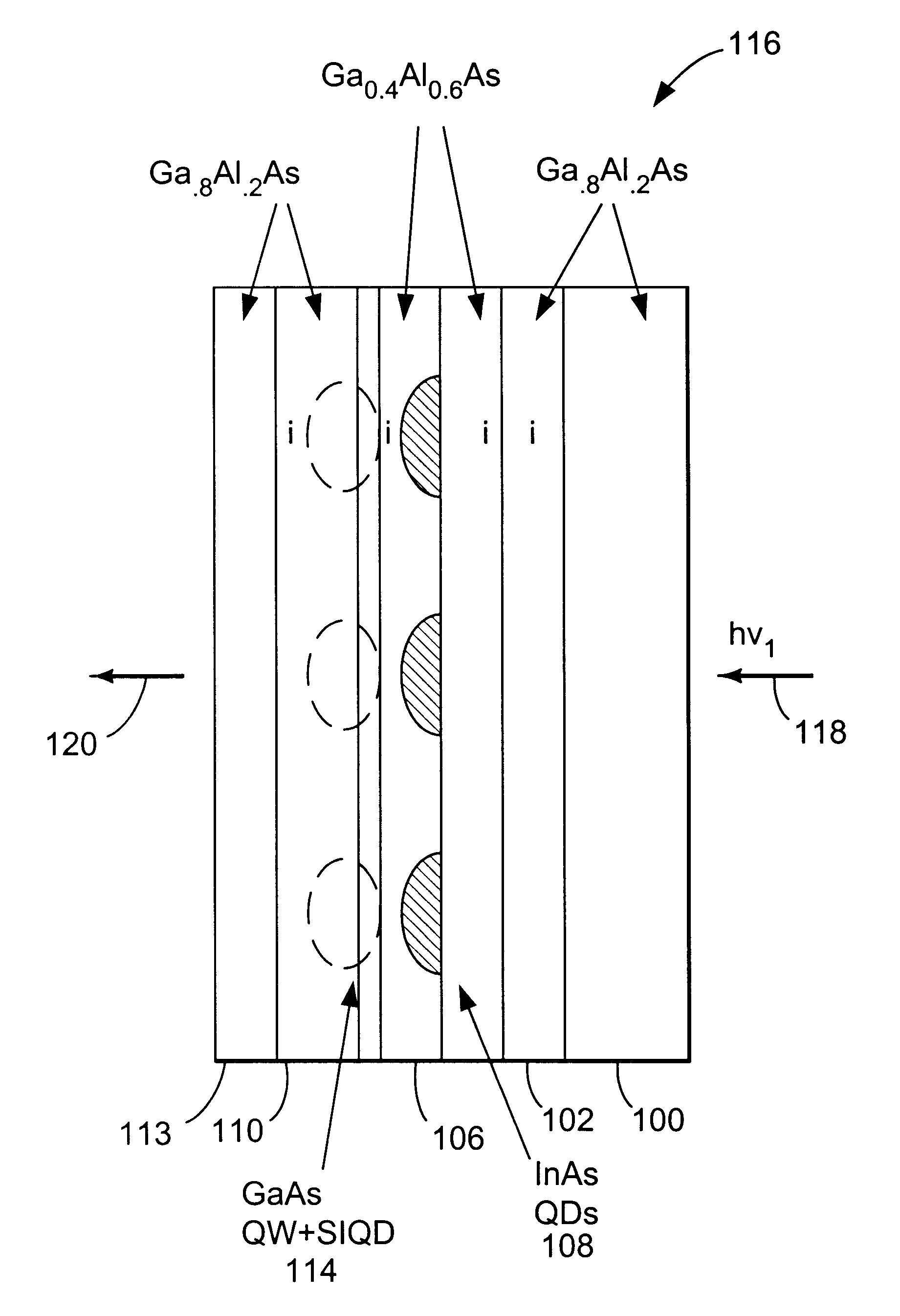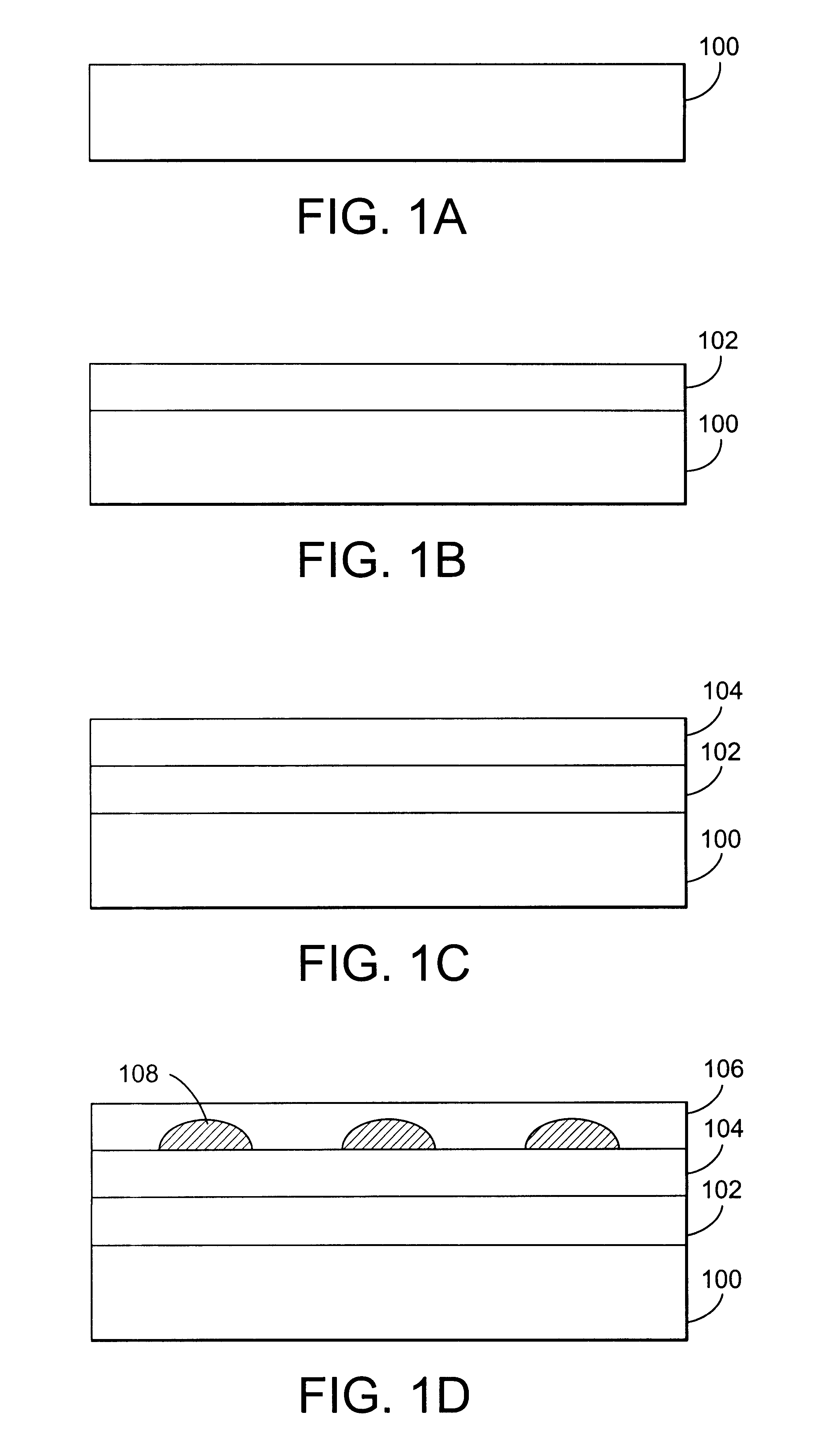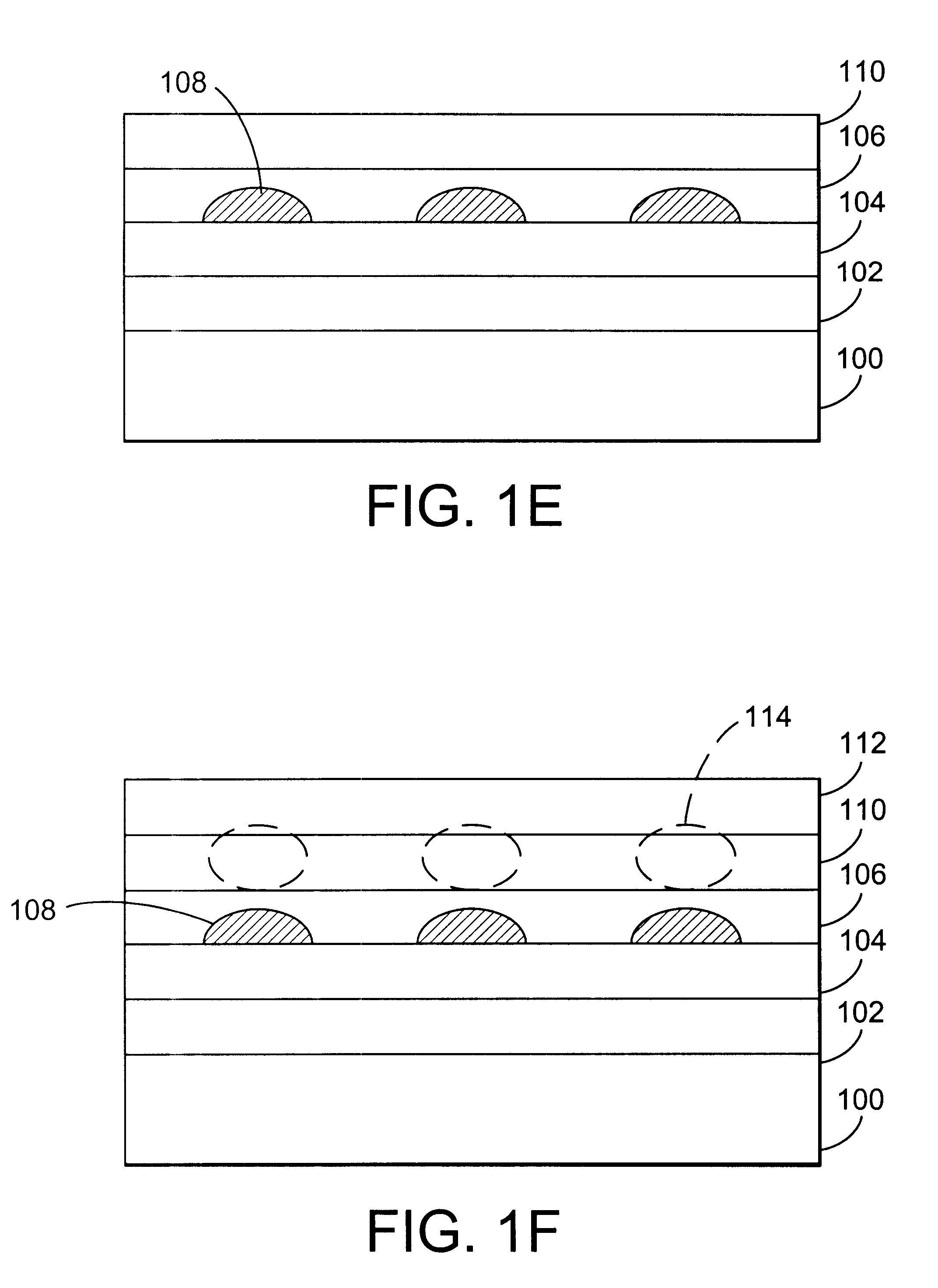Mid infrared and near infrared light upconverter using self-assembled quantum dots
a quantum dots and converter technology, applied in the field of electronic devices, can solve the problems of difficult bonding of detectors to si chips, inability to cheaply provide reliable devices, and inability to process hgcdte or insb itself extremely complex and costly,
- Summary
- Abstract
- Description
- Claims
- Application Information
AI Technical Summary
Problems solved by technology
Method used
Image
Examples
Embodiment Construction
Although described with respect to GaAs / InAs materials systems, the present invention can be used with any materials system, including but not limited to any material system where quantum dots can be fabricated using MBE, MOCVD or MOMBE techniques, such as InP / GaInP, InGaAlAs / AlGaAs, InGaN / GaN, SiGe / Si, or other combinations of materials. The strain induced quantum dots 114 can be induced in any of the materials listed. The SiGe / Si system can be directly integrated to silicon CCD camera elements for ease of manufacture. Multiple conversions from one wavelength to another using multiple quantum dot / stress induced quantum dot excitations are also possible using the present invention. For example, a GaAs / InP system can be used to convert M&FIR wavelengths to near visible or visible wavelengths.
The stress induced quantum dot layer 110 can be replaced by a layer of coupled quantum dots which are coupled and close to the quantum dots 108. These coupled quantum dots have appropriate dimens...
PUM
| Property | Measurement | Unit |
|---|---|---|
| distance | aaaaa | aaaaa |
| wavelength | aaaaa | aaaaa |
| wavelength | aaaaa | aaaaa |
Abstract
Description
Claims
Application Information
 Login to View More
Login to View More - R&D
- Intellectual Property
- Life Sciences
- Materials
- Tech Scout
- Unparalleled Data Quality
- Higher Quality Content
- 60% Fewer Hallucinations
Browse by: Latest US Patents, China's latest patents, Technical Efficacy Thesaurus, Application Domain, Technology Topic, Popular Technical Reports.
© 2025 PatSnap. All rights reserved.Legal|Privacy policy|Modern Slavery Act Transparency Statement|Sitemap|About US| Contact US: help@patsnap.com



